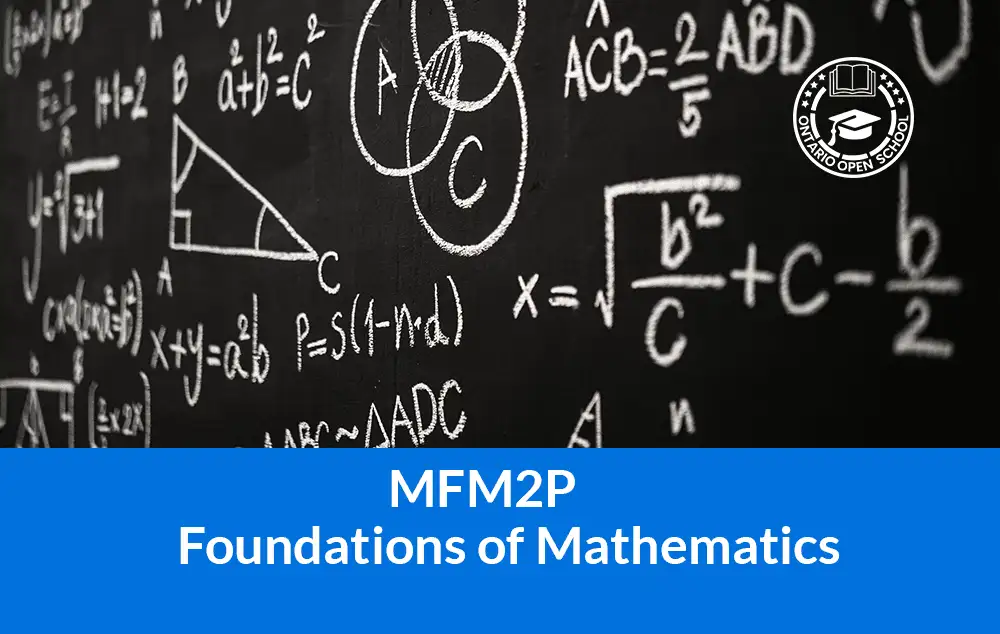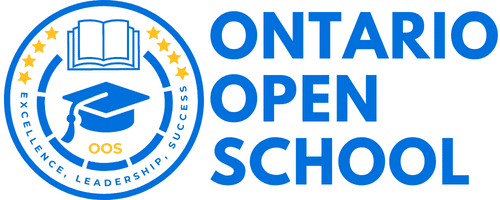- info@ontarioopenschool.com
- 647-494-4499
-
Unit 100 - 29 Gervais Drive, North York, ON.
M3C 1Y9
Copyright 2024 Ontario Open School Inc. All Rights Reserved.
This course enables students to consolidate their understanding of linear relations and extend their problem-solving and algebraic skills through investigation, the effective use of technology, and hands-on activities. Students will develop and graph equations in analytic geometry; solve and apply linear systems, using real-life examples; and explore and interpret graphs of quadratic relations. Students will investigate similar triangles, the trigonometry of right triangles, and the measurement of three-dimensional figures. Students will consolidate their mathematical skills as they solve problems and communicate their thinking.
Unit Order | Unit Name | Suggested Time |
|---|---|---|
| Unit 1 | Similarity in Triangles In this unit, students will learn about the concept of similarity of triangles in a mathematical context. Students will learn tools to check for similarity and solve problems related to similarity. | 16 hours |
| Unit 2 | Trigonometry This unit is all about triangles and how they can be used to describe many phenomena in the universe. Sine, cosine and tangent ratios will be examined, as will the ability to solve problems using these tools. | 18 hours |
| Unit 3 | Formulas & Equations In this unit, strategies for performing measurement conversion will introduce the larger topic of solving equations. By the end of this unit, students will be able to solve multi-step equations and more than one variable. | 17 hours |
| Unit 4 | Linear Relations & Systems In this unit, students will learn about linear equations and their graphs and how to solve linear equations and the method of substitution and elimination to solve linear systems. | 25 hours |
| Unit 5 | Quadratic Functions & Equations In this unit, students will learn the concept of the function, the domain, range and simple transformations of quadratic functions. Students will investigate vertices & axes of symmetry along with intercepts & direction of opening. students will continue to learn the algebra of quadratic equations. | 26 hours |
| Final Evaluation 30% | ISP Final Exam | 6 hours 2 hours |
| Total | 110 Hours |
A wide variety of instructional strategies are used to provide learning opportunities to accommodate a variety of learning styles, interests, and ability levels. These strategies include:
|
Strategies marked with “x” are used in the course. |
|||
|
Direct Instruction (teacher-led) |
x | Class Activity (teacher facilitation) | x |
| Direct Instruction (discussion possible) | x | Experiential learning (learn by doing) |
|
|
Class Discussion (teacher facilitated) |
x | Worksheets/Surveys | |
| Small Group Discussion | x | Individual or Group Research |
|
|
Partner Discussion/Conferencing |
x | Teacher modeling | x |
| 1:1 Conferencing Teacher & Student | Text-based modeling |
|
|
|
Teacher reading to class |
Use of Computers / Internet | x | |
| Silent individual reading | Use of video tape or audio materials |
|
|
|
Group based reading |
Role Playing | ||
| Independent Work (teacher facilitation) | x | Presentations |
x |
|
Group Work (teacher facilitation) |
x | Guest Speaker / Interviews / Questions | |
| Brainstorming | Field Trip |
|
|
Purpose
The primary purpose of assessment is to improve student learning. Assessment relates directly to the expectations for the course.
A variety of assessments for and as learning are conducted on a regular basis to allow ample opportunities for students to improve and ultimately demonstrate their full range of learning and for the teacher to gather information to provide feedback. Assessment tasks relate to the success criteria set out in lesson plans. Success criteria allow students to see what quality looks like.
Evaluation is the process of judging the quality of student work in relation to the achievement chart categories and criteria and assigning a percentage grade to represent that quality. Evaluation is based on gathering evidence of student achievement through:
Assessment for Learning – we provide feedback and coaching. Assessment FOR Learning is the process of seeking and interpreting evidence for the use of learners and their teachers to decide where the learners are in their learning, where they need to go, and how best to go there.
Assessment as Learning – we help students monitor progress, set goals, reflect on their learning
Assessment AS Learning is the process of the explicit fostering of students’ capacity over time to be their own best assessors, but teachers need to start by presenting and modeling external, structured opportunities for students to assess themselves.
Assessment of Learning – we use assessments to provide evaluative statements about student achievement. Assessment OF Learning is the assessment that becomes public and results in statements of symbols
(marks/grades/levels of achievement) about how well students are learning. It often contributes to pivotal decisions that will affect students’ future.
ASSESSMENT TOOLS
|
Assessment tools marked with “x” are used in the course. |
|||
| Marking schemes | Rubrics |
x |
|
|
Anecdotal comments |
Checklists | x | |
| Rating Scales |
|
||
|
Assessment for Learning |
Assessment as Learning | Assessment of Learning | |||
| Quizzes | x | Reflective Journal | x | Tests |
x |
|
Tests |
x | Exit and Entrance Cards | Presentations | ||
| Presentations | x | KWL Chart | Journals |
|
|
|
Journals |
Self/Peer assessment | x | Essays | ||
| Essays | Logs | Models |
|
||
|
Models |
x | Projects | x | ||
| Projects | Demonstrations |
|
|||
|
Demonstrations |
x | Conferencing | |||
| Conferencing | Questioning |
|
|||
|
Questioning |
x | Independent Study Assignment | x | ||
| Assignment | x | Art Exhibits |
|
||
|
Art Exhibits |
Researching | ||||
| Researching | Final Exam |
x |
|||
|
Reading Aloud |
Problem Solving (process focused) | ||||
| Problem Solving (process focused) | x | Independent Study Test |
x |
||
|
Debates |
|||||
| Work Sheets |
|
||||
|
Role Playing |
|||||
| Direct Instruction |
|
||||
Resources
Growing Success: Assessment, Evaluation and Reporting in Ontario Schools (2010)
http://www.edu.gov.on.ca/eng/policyfunding/growSuccess.pdf
McGraw Hill Ryerson,
Nelson text book.
Chris Kirkpatrick, Peter Crippin, Rob Donato, Dave Wright, Principles of Mathematics 9, Nelson Education
Grading
Weighting of categories
| Knowledge/Understanding | Thinking/Inquiry | Communication | Application |
| 25% | 25% | 25% | 25% |

Course Grade | Grade 10 |
|---|---|
Course Code | MFM2P |
Course Category | Mathematics |
Course Type | Applied |
Course Delivery | Online |
Course Duration | 110h |
Course Credit | 1.00 |
Copyright 2024 Ontario Open School Inc. All Rights Reserved.
